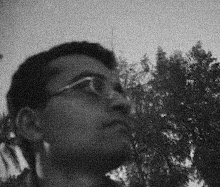Hi!
So you don’t have picture archiving and communication system (PACS) in your hospital? It’s a shame, but don’t you despair. There is a cheap and effective mechanism to archive your patient’s images till PACS arrives.
I have seen than most of the departments are struggling and juggling with CDs of imaging data of patients – some of which do not open after sometime. You could always copy them as individual files to your computer but opening them is a hassle most of the time.
What you can do is use a CD drive emulator which makes a clone image of the CD and stores in your hard drive and mounts them as virtual CD drives whenever you want it. The advantages are many:
1. Hard drive access speed is many hundred times faster than a spinning CD. Scans open much faster. Trust me; you will save many hours of your life eventually.
2. You can run multiple scans simultaneously and compare them. (useful for teaching, reviewing old scans of a patient)
3. Archiving in hard drive allows all your scans to be in one place where you can search and find by patient details.
4. Backing up your hard drive is another layer of protection from the nuisance of corrupted / scratched CDs.
5. You can access your imaging data from anywhere in the hospital, if your hospital network is LAN connected. Just share the folder or drive where you have stashed away your alcohol barrels (mdf and mds alcohol image files) using the network places dialog boxes.(-poor man’s PACS costing around 0.00 $.)
This is what you got to do:
1. Download Alcohol 52% software from this link and install in your computer. (you can use other similar software too) (alcohol 120% is a paid software and one does not need this)
2. Whenever you need to see an MRI or CT, first ‘alcoholise’it –that is, make an image of it in the hard drive.
3. Once Alcohol dumps the image, the CD will be ejected. You can (and should immediately) give it back to the patient.
4. Mount the image as a virtual drive. (You can make many virtual CD drives as you want which will appear as multiple CD drives in ‘my computer’.
5. Click on the cd drive and watch scans as you normally do.
Departments that use a lot of scans like neurology, cardiology, RT, pediatrics, oncology etc might benefit.
A few tips:
1. Label the image file properly first time. This will make searches easier after a few years of accumulating scans.
Name age sex hospital number diagnosis or description date of scan
Or
Name_age_sex_hospital number_diagnosis_description of surgery_date of scan
(Do not use / < > ? etc)
Example:
Arnold 40 m Y353535 cyberdyne chip implant postopMRI 10Aug2025
2. Dedicate an entire partition (make it large, hard drives costs peanuts anyway nowadays)
3. Back it up regularly on a physically independent disk (and if you are the really paranoid/a-fixated types, back it up again on Bluray– I am not!)
4. Try not to see MRI or CTs first and then decide on copying. It’s faster to copy firstand then see it. You can always delete it if you don’t want it in the archive.
Hope this helps. Feel free to mail me if you run into turbulence. May be, if I have time, I’ll send you an instructional screen capture video. As of now you can take a look at the screen capture pics.
I had introduced Alcohol to my colleagues in my department four years back and I can assure you that they all are happily (and safely) addicted!
Regards,
MS Gopalakrishnan
Neurosurgery
23 Aug 2011



0 comments:
Post a Comment